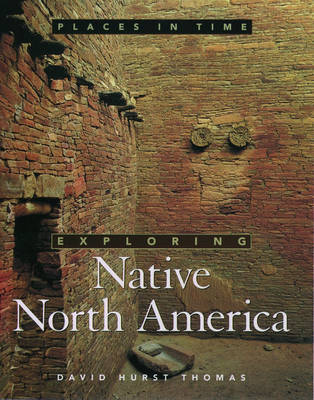Places in time
1 total work
From Blackwater Draw in New Mexico to the Little Bighorn Battlefield in Wyoming, the archaeological evidence left by Native Americans forms a fascinating legacy. In the third volume in Oxford's acclaimed Places in Time series, David Hurst Thomas guides readers through twenty well-known sites in the United States, Canada, and Mexico.
A lively and engaging narrative, as well as photographs, maps, reconstructions, and site plans help tell the story of each site and illuminate the early history of North America. Thomas's introduction provides a brief history of the archaeological research in the region, along with a discussion of its demographic trade and economy, science and technology, and art and religion. Each chapter is devoted to a single site and features a map showing its location, a site plan or reconstruction, a chronological table covering the span of occupation, a history of the site's excavation, a discussion of the principle finds and description of the particular method used by archaeologists. Sites covered include Cape Krusenstern in Alaska, Head-Smashed-In-Buffalo Jump in Canada, Mesa Verde in Colorado, Serpent Mound in Ohio, and Knife River in North Dakota. Thomas also addresses the culture and way of life of the people who lived at each site, their technological achievements, their relationship with the environment, and the spiritual beliefs that motivated them.
Gracefully written and based on the most current archaeological scholarship, Exploring Native North America offers a fascinating tour for history buffs, armchair time-travelers, and anyone planning to explore these intriguing sites.
A lively and engaging narrative, as well as photographs, maps, reconstructions, and site plans help tell the story of each site and illuminate the early history of North America. Thomas's introduction provides a brief history of the archaeological research in the region, along with a discussion of its demographic trade and economy, science and technology, and art and religion. Each chapter is devoted to a single site and features a map showing its location, a site plan or reconstruction, a chronological table covering the span of occupation, a history of the site's excavation, a discussion of the principle finds and description of the particular method used by archaeologists. Sites covered include Cape Krusenstern in Alaska, Head-Smashed-In-Buffalo Jump in Canada, Mesa Verde in Colorado, Serpent Mound in Ohio, and Knife River in North Dakota. Thomas also addresses the culture and way of life of the people who lived at each site, their technological achievements, their relationship with the environment, and the spiritual beliefs that motivated them.
Gracefully written and based on the most current archaeological scholarship, Exploring Native North America offers a fascinating tour for history buffs, armchair time-travelers, and anyone planning to explore these intriguing sites.
